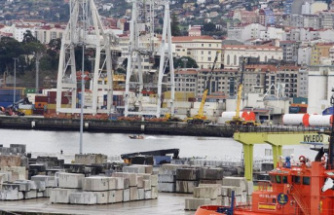Officials have confirmed that the U.S. military, despite vowing not to use depleted uranium weapons on the battlefield in Iraq and Syria, fired thousands of rounds of the such munitions during two high-profile raids on oil trucks in Islamic State-controlled Syria in late 2015.
The air assaults mark the first confirmed use of this armament since the 2003 Iraq invasion, when it was used hundreds of thousands of times, setting off outrage among local communities, which alleged that its toxic material caused cancer and birth defects.
U.S. Central Command (CENTCOM) spokesman Maj. Josh Jacques told Airwars and Foreign Policy that 5,265 armor-piercing 30 mm rounds containing depleted uranium (DU) were shot from Air Force A-10 fixed-wing aircraft on Nov. 16 and Nov. 22, 2015, destroying about 250 vehicles in the country's eastern desert.
Earlier in the campaign, both coalition and U.S. officials said the ammunition had not and would not be used in anti-Islamic State operations. In March 2015, coalition spokesman John Moore said, "U.S. and coalition aircraft have not been and will not be using depleted uranium munitions in Iraq or Syria during Operation Inherent Resolve."
Later that month, a Pentagon representative told War is Boring that A-10s deployed in the region would not have access to armor-piercing ammunition containing DU because the Islamic State didn't possess the tanks it is designed to penetrate.
It remains unclear if the November 2015 strikes occurred near populated areas. In 2003, hundreds of thousands of rounds were shot in densely settled areas during the American invasion, leading to deep resentment and fear among Iraqi civilians and anger at the highest levels of government in Baghdad. In 2014, in a U.N. report on DU, the Iraqi government expressed "its deep concern over the harmful effects" of the material. DU weapons, it said, "constitute a danger to human beings and the environment" and urged the United Nations to conduct in-depth studies on their effects.
Russian drone shows new damage to Palmyra's Roman amphitheater Nataliya Vasilyeva and Bassem MroueRussia on Monday released footage from one of its drones in Syria, revealing for the first time the latest destruction to the ruins of historic Palmyra since it was recaptured by Islamic State militants, as Syrian government forces pushed ahead on the ground in a new offensive to take the city...
Russia on Monday released footage from one of its drones in Syria, revealing for the first time the latest destruction to the ruins of historic Palmyra since it was recaptured by Islamic State militants, as Syrian government forces pushed ahead on the ground in a new offensive to take the city...
(Nataliya Vasilyeva and Bassem Mroue)Such studies of DU have not yet been completed, and scientists and doctors say as a result there is still very limited credible "direct epidemiological evidence" connecting DU to negative health effects.
The potential popular blowback from using DU, however, is very real. While the United States insists it has the right to use the weapon, experts call the decision to use the weapon in such quantities against targets it wasn't designed for - such as tanks - peculiar at best.
The U.S. raids were part of "Tidal Wave II" - an operation aimed at crippling infrastructure that the Islamic State relied on to sell millions of dollars' worth of oil. The Pentagon said the Nov. 16 attacks happened in the early morning near Al-Bukamal, a city in the governorate of Deir Ezzor near the border with Iraq, and destroyed 116 tanker trucks. Though the coalition said that the strikes occurred entirely in Syrian territory, both sides of the frontier were completely under the control of the militant group at the time.
In friendly fire incident, Russian airstrike kills 3 Turkish soldiers in northern Syria Andrew Roth, Liz SlyA Russian airstrike in northern Syria killed three Turkish soldiers and wounded 11 more, senior Russian officials confirmed Thursday evening, in a friendly fire incident that could test the shaky coordination between the two countries in the fight against the Islamic State.
The attack occurred...
A Russian airstrike in northern Syria killed three Turkish soldiers and wounded 11 more, senior Russian officials confirmed Thursday evening, in a friendly fire incident that could test the shaky coordination between the two countries in the fight against the Islamic State.
The attack occurred...
(Andrew Roth, Liz Sly)Any firing of DU in Iraqi territory would have far greater political repercussions, given the anger over its previous use there. The Nov. 16 video below shows tankers hit first by larger ordnances, before others are engulfed in sparks and ripped apart by fire from 30 mm cannons.
Our editors found this article on this site using Google and regenerated it for our readers.













